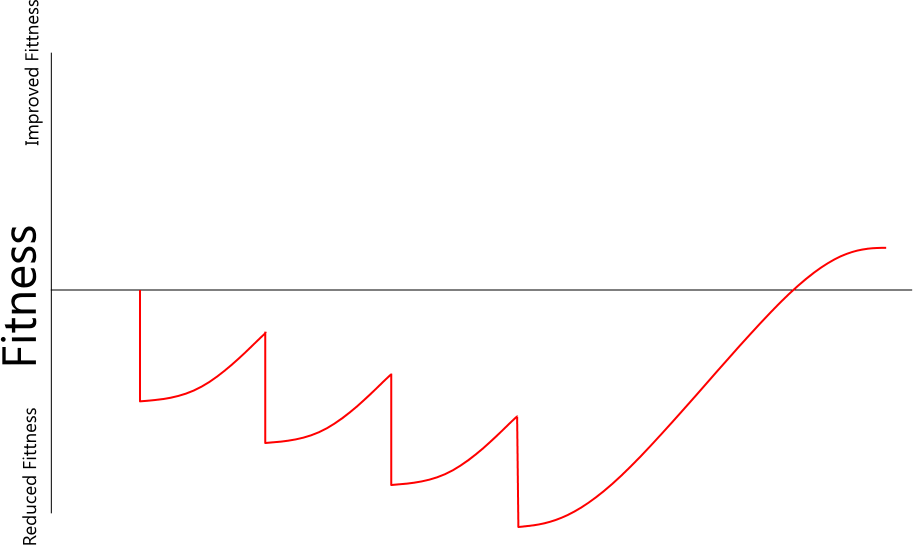When I'm preparing for a big race I will often use an overload taper. This
approach uses a week long overload period of increased training stress before a
two-week reduction leading up to the race. The idea is that during the overload
week fatigue builds up cumulatively, and the two weeks of reduced training
allows for Supercompensation.
For the 2013 Croatan 24 hour race
I attempted to run 32 miles/day, ending up with a total of 200 miles. I thought I'd share some background and observations.
- In the week before the overload I ran four times totaling 106 miles. One of those runs was a treadmill descent at 12% decline covering 26 miles at 6:30 min/mile pace. This caused significant DOMS.
- At the start of the overload week I still had quite a bit of the DOMS remaining. However, even though I was running 32 miles a day, I found my legs were able to recover, and the DOMS disappeared midway through the overload week.
- Running 32 miles requires quite a bit of time, especially as fatigue slowed me up during the week. As a consequence I had to get up particularly only which reduced my sleep time.
- I also found my sleep quality became increasingly impaired as the week progressed. Initially this was a reduction in REM sleep, something I've found, and with increased training. However, as the week progressed I also found it harder to fall asleep due to muscular pain. By the end sleep deprivation had become an issue.
- Because I was getting up so early a lot of my run was in the dark, something that is psychologically tough. I found my mood always improved with the dawn.
- While the DOMS disappeared during the week, it was replaced by significant, pervasive muscular soreness. Extensive use of massage helped keep my legs working, but eventually the situation became untenable. It was interesting to observe on Saturday after a 24 mile run, my legs did not feel tired, just sore.
- Given the level of sleep deprivation and fatigue I was surprised that my mood state remained much better than I would've expected. I suspect that this is a benefit of my ketogenic diet.
- The graph below (from Supercompensation and Overload) seems remarkably appropriate for this week. As the fatigue increased, my effective fitness steadily went down. By the end of the week is a 9:00 min/mile pace seemed quite fast. My personal interpretation is that the fatigue is exhausting the muscle fibers that are normally recruited first, so the muscle recruitment pattern is changing to use secondary fibers. My hope is that this fatigue helps train and adapt these secondary fibers.
- By day 6 (Saturday) my legs were too painful to finish the 32 miles, and I quit after 24. I thought the week was over, as it was painful to walk after I’d finished the run. Strangely, my legs did not seem tired in the usual sense, just damaged. I resorted to some particularly deep massage on my quads, using my elbow to dig into the Vastus intermedius muscle and the adductors. This massage, combined with an hour’s sleep in the afternoon and some extra calories and I felt surprisingly good.
- I decided to run again on Sunday and my legs felt strong, with the pain in my quads not returning until about 10 miles. I was able to keep up a 8:15 min/mile pace, which was not bad given the preceding week. I stopped after 16 miles, as this rounded things out to 200 miles for the week.
- I did try to keep using my DIY altitude training system during this overload week, but it was too much. I found that the hypoxia was too tiring and I dropped it after a couple of days.




No comments:
Post a Comment